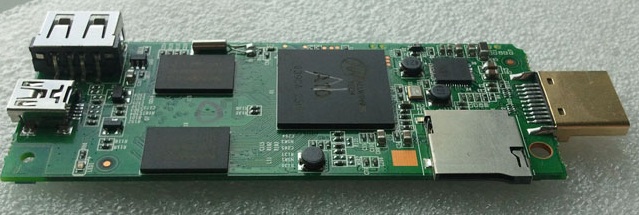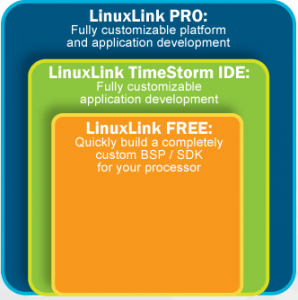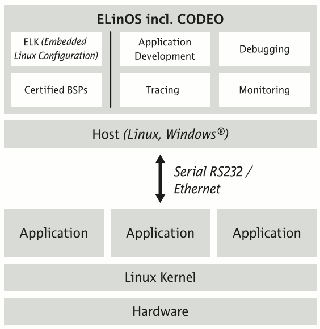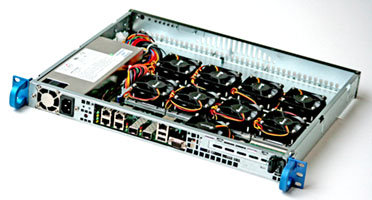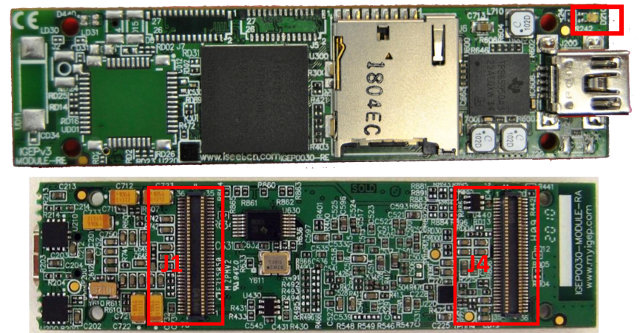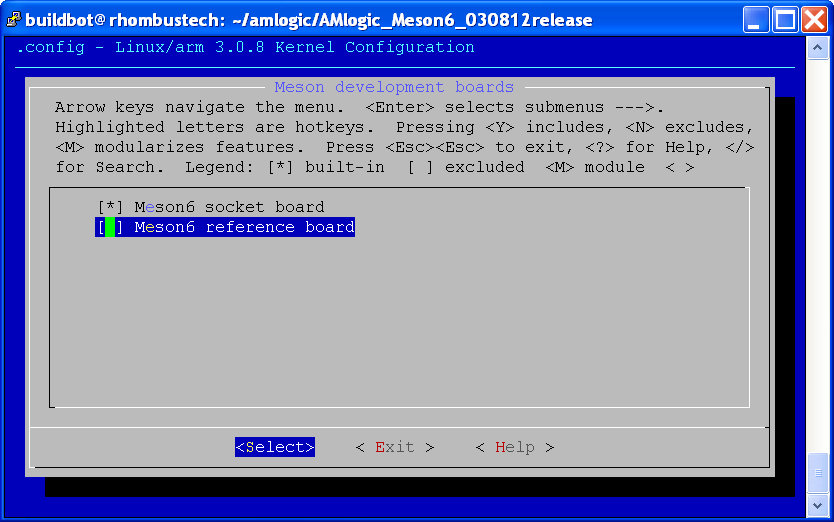I’ve been informed of a new AllWinner A10 development board which is marketed as some sort of Raspberry Pi “clone”, although the hardware is different. The UPuter Pi is a small board designed by QuickEmbed Technology, a Shanghai based company, that features AllWinner A10 processor @ 1.5 GHz, 512 to 1 GB RAM, and 4 to 8 GB Flash. Here are the specs as mentioned on the company website: CPU 1.5GHz ARM Cortex-A8 multi-core Mali400 graphic engine Memory 512M/1GB DDR3 Flash 4G/8G DC 5V USB power working temperature -10 to 70C storage temperature -20 to 80C Android 4.0 WIFI/RJ45 network USB/Wireless keyboard/mouse 3G usb card TF card, U-disk, usb harddisk 720P/1080P/2160P I must have gone blind because I don’t see any RJ45 connector (for Ethernet). The board will support Android 4.0 and all the usual Linux distros supported by Allwinner A10 processor. QuickEmbed may have pushed the clone concept a […]
MPEG2 and VC-1 Codecs, H.264 Encode and HDMI CEC Are Now Available for the Raspberry Pi
Many people appear to have bought the Raspberry Pi in order to use it as a cheap media player by installing distributions such as Raspbmc or OpenElec. The only problem is that this low cost board was primarily designed as an educational platform, so the Raspberry Pi foundation only paid for H.264 licensing, which means you could only playback H.264 videos, and all other video codecs could not be played (by hardware) making it a rather poor media player. But things have improved, as the good people at the Raspberry Pi foundation have worked out a deal with the licensing organizations and now offer support for 2 new codecs: MPEG2 license key – 2.4 GBP (~3.8 USD) VC-1 license key – 1.2 GBP (~1.9 USD) Once those 2 codecs are enabled you should be able to play your DVD rips and most HD wmv files smoothly. The way it work […]
Timesys Unveils LinuxLink BSP/SDK for MityARM-3359 SoM (TI AM335x)
Critical Link is an electronics product development company that provides “MityDSP” and “MityARM” System on Modules and Timesys is a software company working on Embedded Linux, which provides LinuxLink, a software development framework for embedded Linux application development. Both companies have partnered to offers LinuxLink BSP/SDK for MityARM-3359 SoM based on Texas Instruments Sitara AM335x Cortex A9 processor. LinuxLink (for MityARM-335x) comes in 2 versions: A free version which includes: A wizard-based interface that simplifies the selection of a Linux kernel, software packages and tools Kernel, toolchain and debugger Access to hundreds of open-source software packages Support by Timesys for build/boot issues. A PRO version (Starts at $5495 per developer) which includes extra “features” such as: TimeStorm IDE – A desktop-based development environment Tools for advanced customization and integration unmetered support Everything is built on Timesys servers, but the web interface makes it quite customizable and offers lots of options […]
SYSGO Releases ELinOS 5.2 Industrial Grade Linux
SYSGO, a software company for the real-time and embedded markets, has announced the release of ELinOS 5.2, an Industrial Grade Linux distribution, updated to kernel 3.2 and with new features related to scheduling, memory management, file systems, networking and security. The new 5.2 version brings the following improvements: Integration of new kernel 3.2 to support new features and availability of previous versions of kernels 2.6.33 and 2.6.34, to respond to customers demand. Real-time extension based on Open Source Automation Development Lab (OSADL) implementation (PREEMPT RT) especially designed and tested for industrial needs. Support for latest embedded CPUs including Intel, Freescale QorIQ, ARM Cortex, TI OMAP 4, Freescale i.MX6 and MIPS. SMP (Symmetric multiprocessing) support on all multi-core platforms. QEMU simulator supported for all architectures. New functionality support in areas of graphics (i.e. AMD Llano Fusion APUs), Wi-Fi (i.e. Intel iwlwifi 105 and 135), SATA (i.e. Intel C600 serial-attached-scsi controller), USB […]
Codethink Launches The Baserock Slab ARM Server
Codethink has just announced an ARM based server called “The BaseRock Slab” powered by Marvell ARMADA XP quad core ARMv7-A processors with 2 GB RAM and 30GB (up to 120GB) mSATA SSD Storage per node, which targets applications such as cloud computing infrastructure and native ARM build and test. This 32 cores server comes in a 1U chassis (483mm x 44mm x 355m), is powered by a 260 PSU, integrates eight Cogent CSB1726-ArmadaXP SoM (Marvell Armada XP quad-core ARMv7-A CPUs, 1.33Ghz + 2 GB ECC DDR3 RAM) in to a carrier board featuring the following: 30GB (max 120GB) mSATA SSD, max 250MB/sec read/write, per SoM SATA port for additional dedicated storage, per SoM Dual 2.5Gbit/s full-duplex ethernet, trunkable into a single 5Gbit/s link Management SoM for remote power, fan and reset control Firmware upgrade via the network The server is managed by Cogent CSB1724 SoM powered by Marvell Armada 300 […]
ISEE Announces Low Cost IGEP COM ELECTRON & SPIN Computers-on-Module
ISEE, the manufacturer of the IGEPv2 board, has recently announced 2 new industrial grade computers on module based on TI Sitara AM3703 Cortex A8 Processor: IGEP COM ELECTRON – AM3703 with 256 MB RAM / 512 MB Flash – 59 Euros IGEP COM SPIN – AM3703 with 64 MB RAM / 128 MB Flash – 49 Euros Here are the specifications of IGEP COM ELECTRON module: CPU – Texas Instruments AM3703 @ 1GHz with L1 cache (112 KB (DSP) / 64 KB (ARM)) and L2 cache (96 KB (DSP), 256 KB (ARM)) System Memory – 256 MB Mobile DDR @ 200 MHz (32-bit) Storage: 512 MB NAND FLASH On board micro-SD socket Connectors: 1 x USB 2.0 OTG interface + USB mini-AB connector 1 x MICRO-SD socket 2 x EXPANSION 70-pin connector Device: 1 x USB 2.0 HOST (connector NOT included) 1 x DOUBLE LED INDICATOR Expansion connectors – 2 […]
AMLogic Releases AML8726-MX Linux 3.0.8 Source Code
While doing a Google search to locate the open Linux page of AMLogic, I noticed another link reading “Amlogic AML8726-MX Linux kernel code released“. Interesting. So AMLogic appears to have released the kernel source code for their latest dual core Cortex A9 processor at the beginning of August and the tarball is available from their open source site: kernel-common-2012-08-03-git-a63244fb9c.tar.gz. A github user (fards) also imported the code to github, but he’s not affiliated with AMLogic, so don’t expect commits from AMLogic there. Let’s retrieve it:
|
1 |
git clone git://github.com/fards/AMlogic_Meson6_030812release.git |
AML8726-MX is codenamed MESON6 in the source code, and the code is in arch/arm/mach-meson6/, but let’s see if we can find a config file in arch/arm/configs. Yes! There are 4: meson6_android_defconfig – Android config file (Single core) meson6_defconfig – Linux config file (Single core) all Android config disabled. meson6smp_android_defconfig – Android config file with smp (symmetric multiprocessing) support meson6smp_defconfig – Config file with smp […]
Firefox OS Running on the Raspberry Pi
Oleg Romashin, a Nokia engineer, has been working on porting Firefox OS (previously known as Boot 2 Gecko) to the Raspberry Pi, and has uploaded a YouTube video showing a Firefox OS running on the device, including a WebGL teapot demo running at 60 fps. This Firefox OS build is based on Debian Squeezy, with plain EGL rendering, no Widget Toolkit backends and no X11. Some parts do not look very smooth yet, but this demo looks promising. If you want to try it yourself, you can download the WebGL teapot build. Mozilla patches with LinuxGL widget backend are also available at http://hg.mozilla.org/users/romaxa_gmail.com/embedipc_queue/file/linuxglpure. If you have the N9 smartphone or Beagleboard, it looks like you can also try this. Check files in http://romaxa.info/b2g/. Jean-Luc Aufranc (CNXSoft)Jean-Luc started CNX Software in 2010 as a part-time endeavor, before quitting his job as a software engineering manager, and starting to write daily news, and […]


